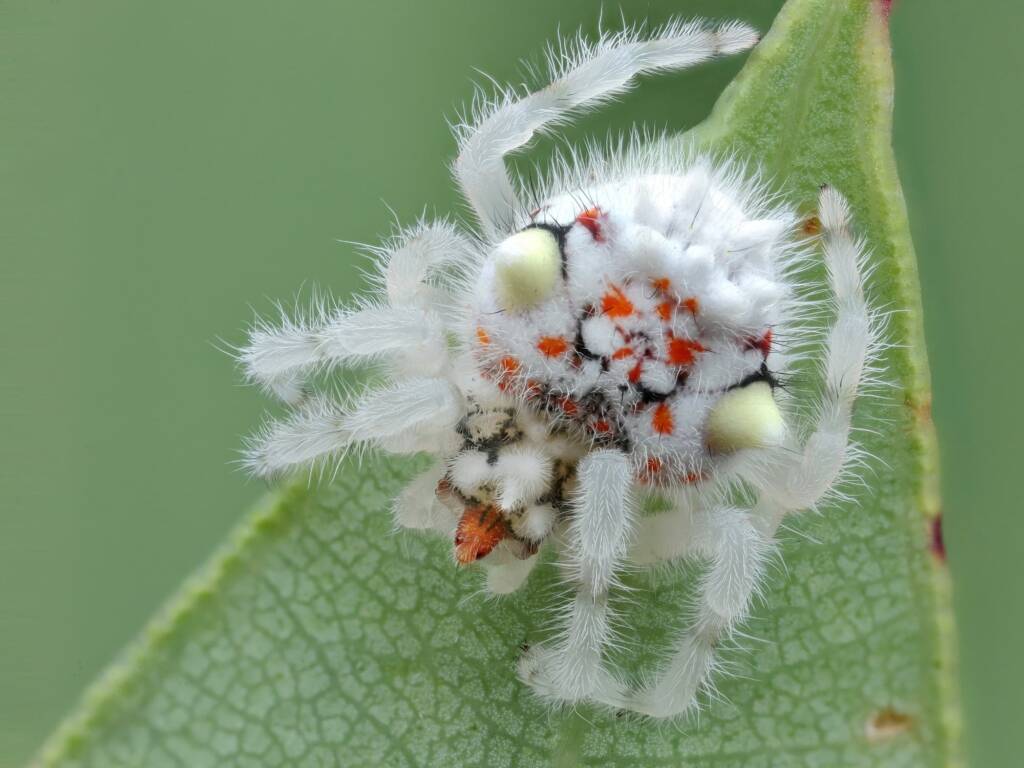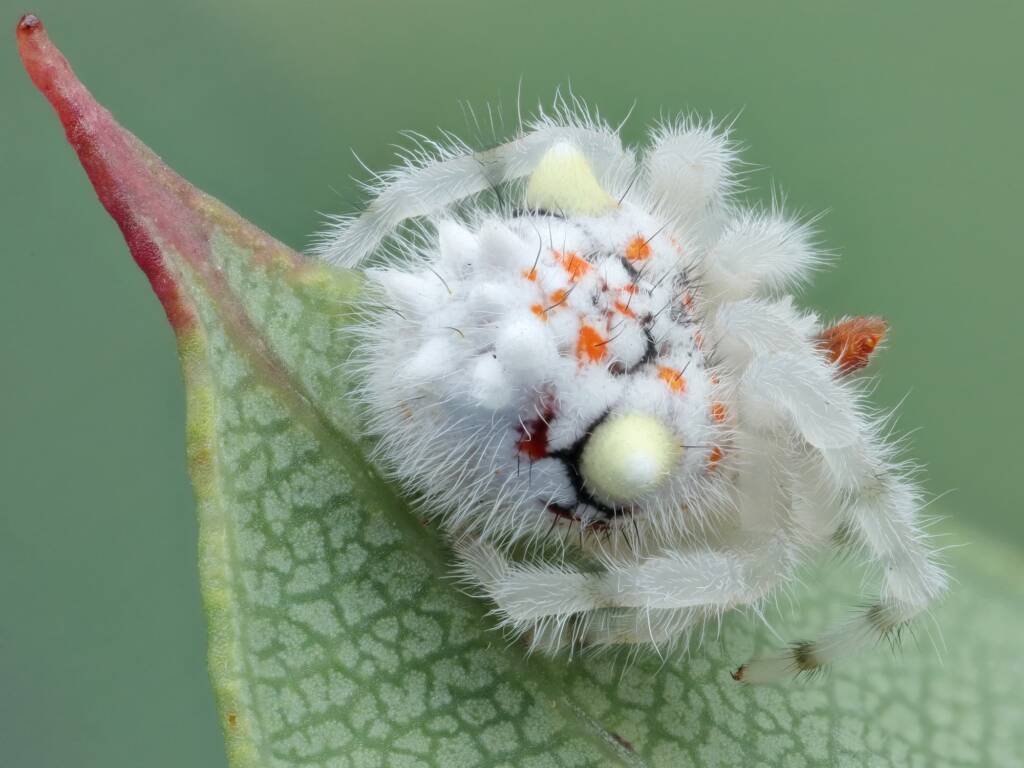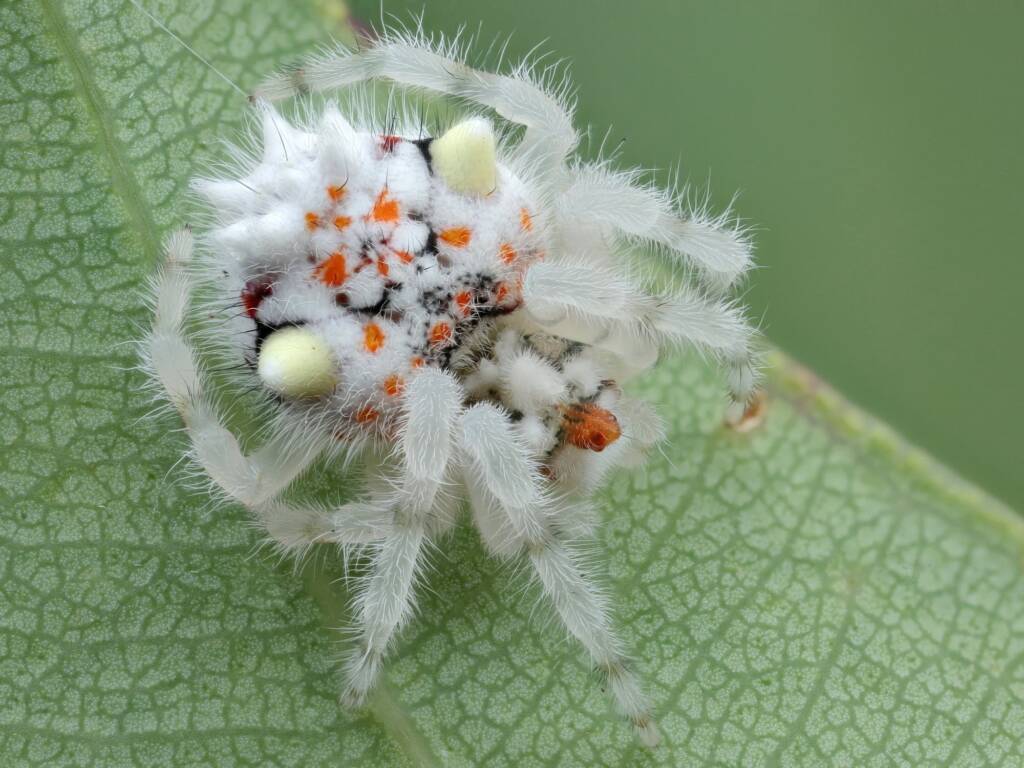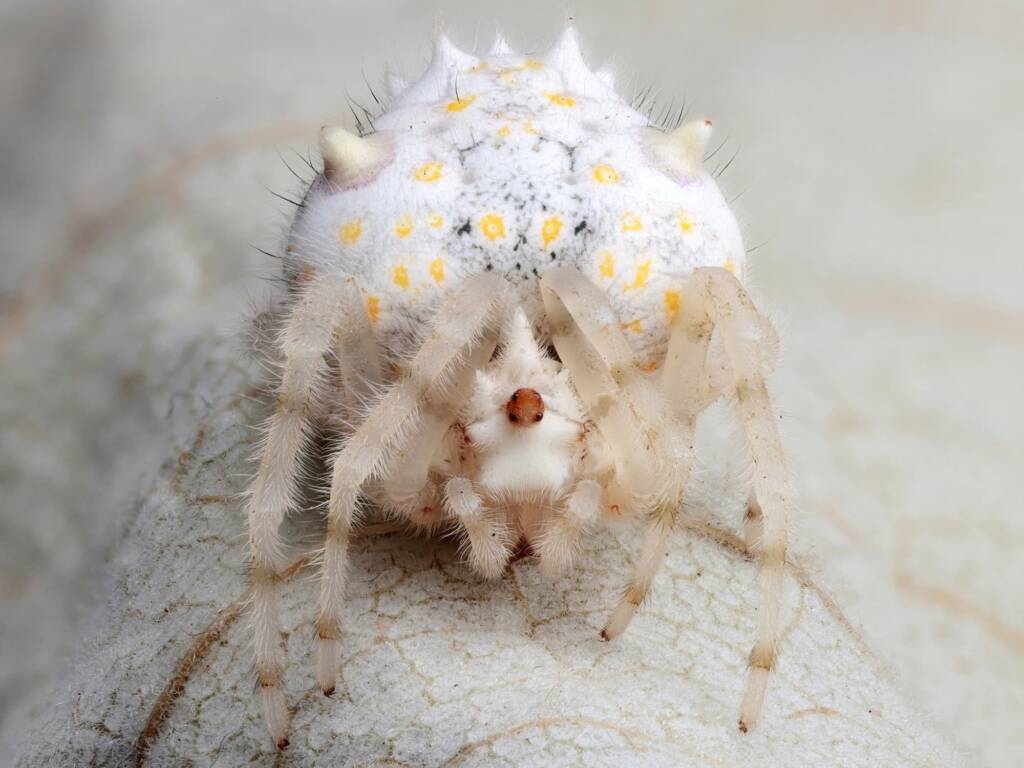Central Coast SpidersSpider Index Arachnura higginsi (Scorpion-tailed Spider) Arkys alatus (Winged Arkys) Arkys alticephala (High-headed Arkys) Arkys curtulus (Bird-dropping Spider) Arkys dilatatus (Dilated Arkys) Arkys transversus Arkys enigma Celaenia Deinopis subrufa (Net-casting Spider) Dolophones turrigera (Turreted Wrap-around Spider) Maratus volans (Peacock Spider) Ordgarius magnificus (Magnificent Spider) Servaea villosa (Shaggy-velvet Servaea) Tetragnatha nitens (Shining Long-jawed Spider) Triangular Spiders
The three species of Bolas spiders known as The Magnificent Spider, that include Ordgarius magnificus (pictured here), O. furcatus and O. monstrosus, are found in eastern Australia.
Ordgarius magnificus is known as the Magnificent Bolas Spider and is endemic to forests areas along the Australian east coast.
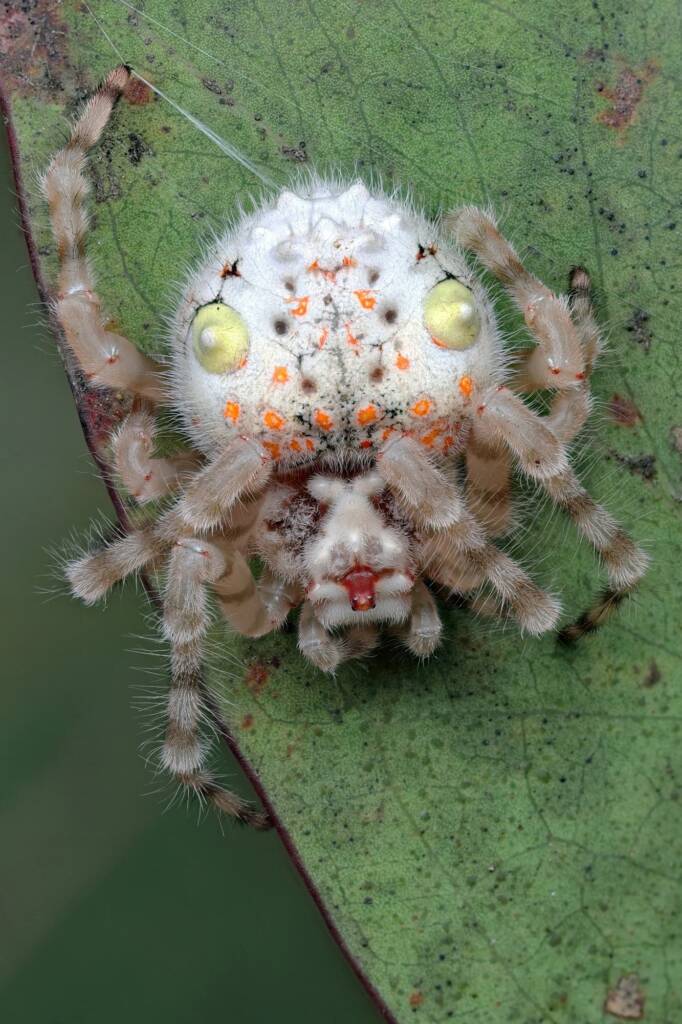
Bolas spiders capture their prey by deception. At night the Magnificent Spider spins a short line of silk with a sticky globule of silk at the free end – the bolas (named after a South American throwing weapon made of rope and weights). This sticky silk globule may contain pheromones that mimic the scent of a certain female noctuid moth species, attracting unwary male moths within range (known as ‘aggressive mimicry’). The Magnificent Spider is very sensitive to vibrations, twirling its thread when it senses the approach of a moth’s beating wings. The moth eventually flutters close enough to be hit by and become stuck to the globule. The spider then pulls up the strand, bites and immobilises the moth, and either eats it straight away or stores it for later, wrapped in silk.
Source: Magnificent Spider, Australian Museum5
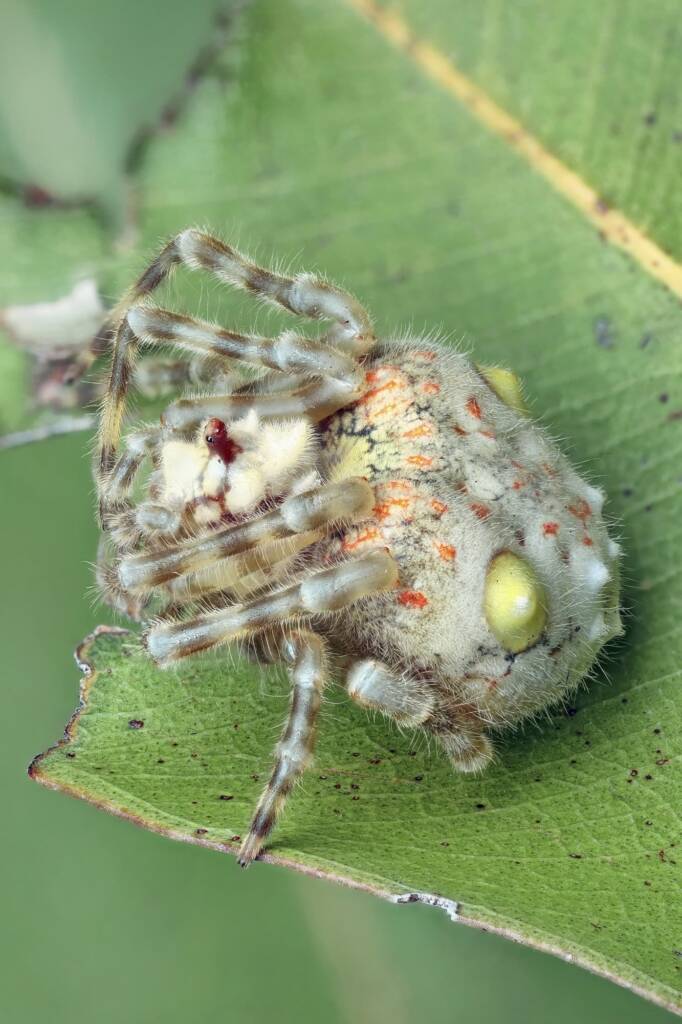
The female Ordgarius magnificus has distinctive markings. It is white (to off-white) with two bright yellow (wart like) knobs on its abdomen, and a number of salmon-coloured spots and blotches and other black markings. The body and limbs are covered with long fine hairs, especially the forelegs. The female Ordgarius magnificus spider is about 1.4 to 2.5 cm in size, the male being smaller, about 1.5 cm in size.
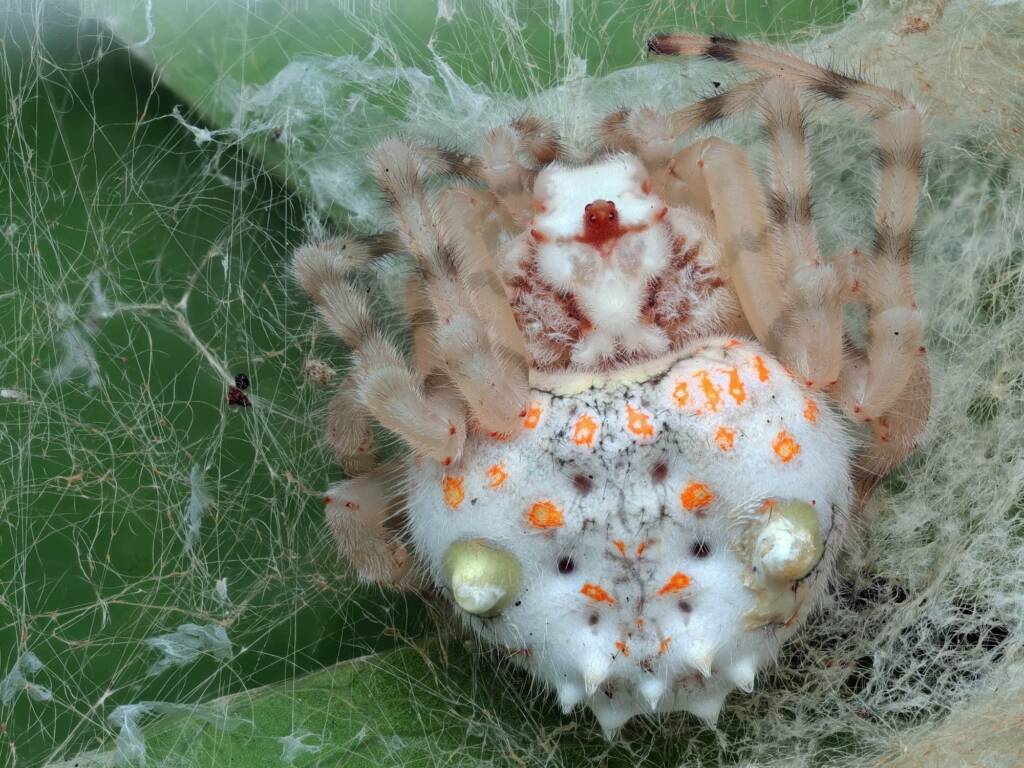
These spiders are active at night, with a simple web rarely less than 2 metres above the ground, in trees or shrubs. They lay a cluster of large, brown egg sacs (up to 5 cm long) hanging among foliage.
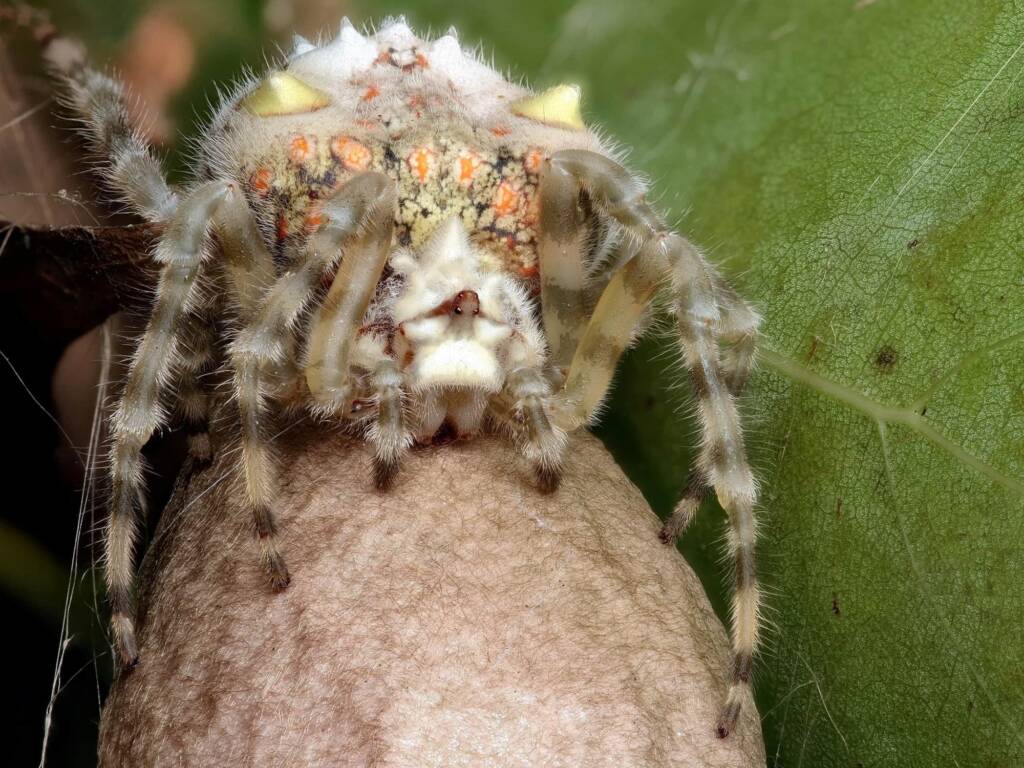
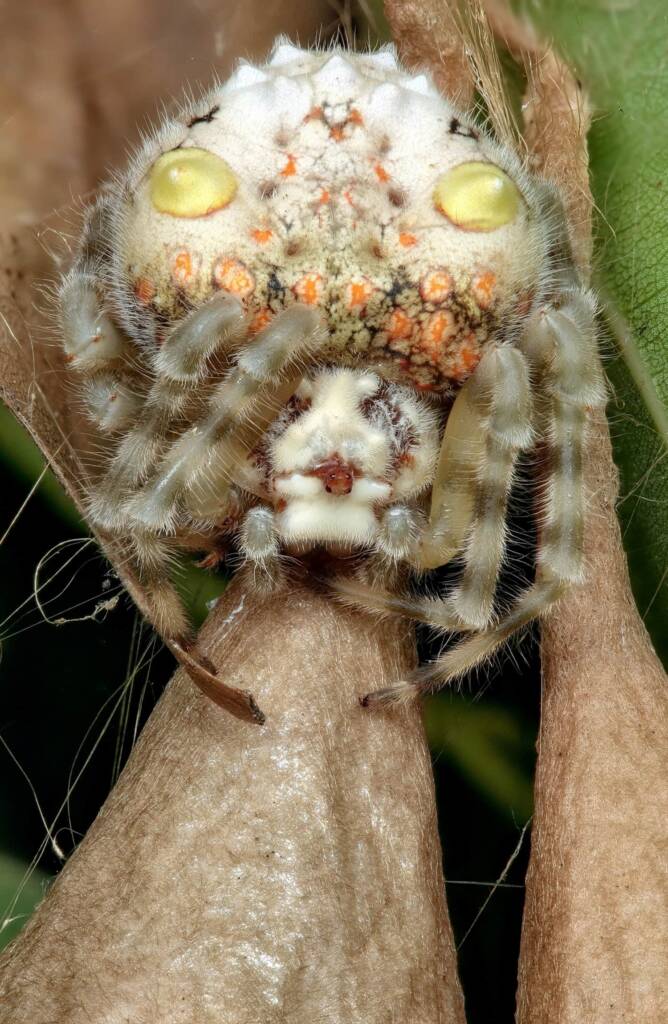
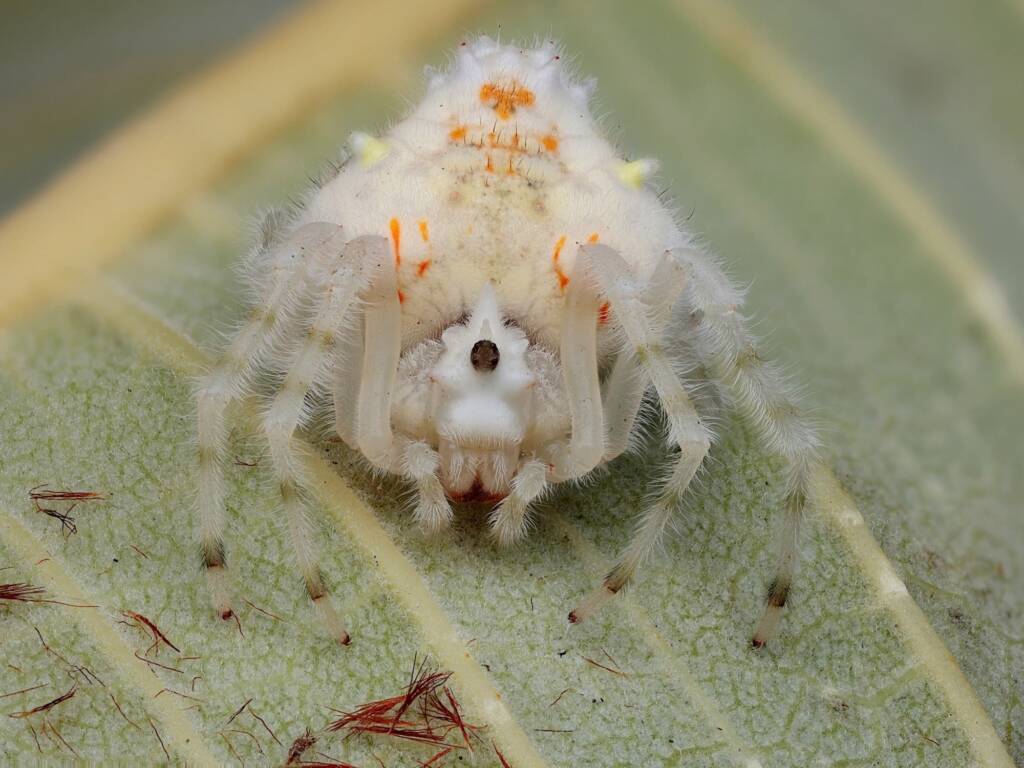
- Scientific classification
- Kingdom: Animalia
- Phylum: Arthropoda
- Subphylum: Chelicerata
- Class: Arachnida
- Order: Araneae
- Suborder: Araneomorphae
- Infraorder: Entelegynae
- Superfamily: Araneoidea
- Family: Araneidae
- Genus: Ordgarius
- Species: Ordgarius magnificus
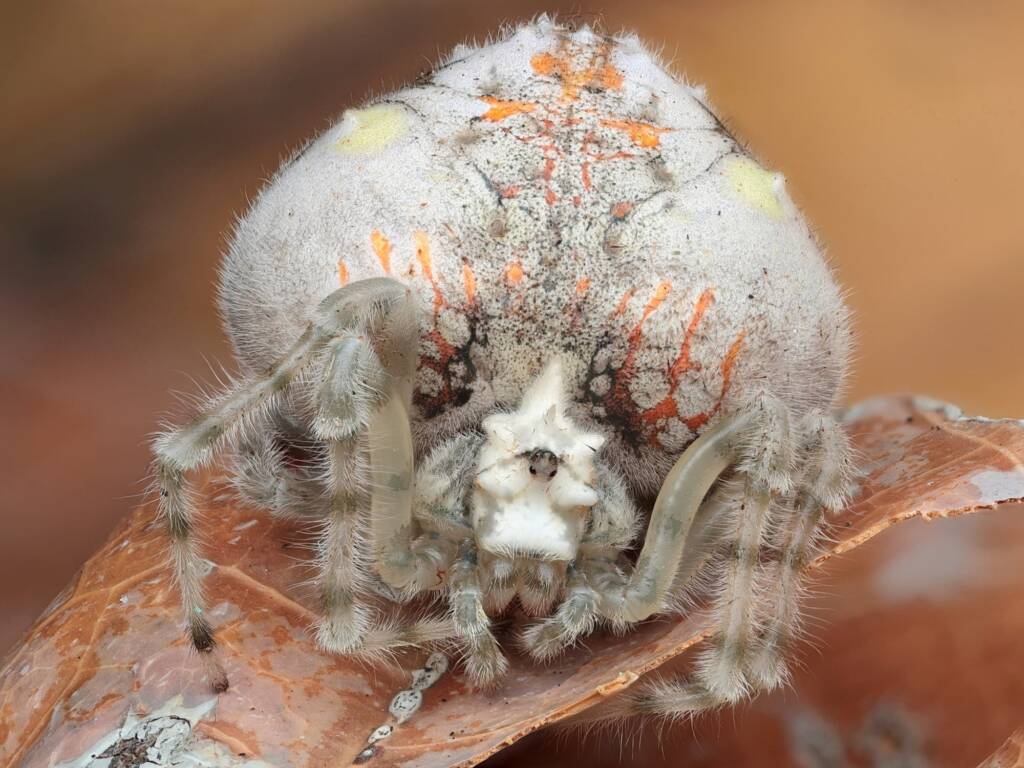
Footnote & References
- Photographs Ordgarius magnificus © Michael Doe
- Michael Doe on Flickr – spiderphotography21
- Ordgarius magnificus, Wikipedia, https://en.wikipedia.org/wiki/Ordgarius_magnificus
- Magnificent Bolas Spider Ordgarius magnificus, iNaturalist, https://www.inaturalist.org/taxa/543576-Ordgarius-magnificus
- Magnificent Spider, Australian Museum, https://australian.museum/learn/animals/spiders/magnificent-spider/
- Ordgarius magnificus (Rainbow, 1897) Magnificent Spider, Arachne.org.au, https://www.arachne.org.au/01_cms/details.asp?ID=2011 (this site is no longer active. Some content can be viewed on Wayback Machine)
Central Coast SpidersSpider Index Arachnura higginsi (Scorpion-tailed Spider) Arkys alatus (Winged Arkys) Arkys alticephala (High-headed Arkys) Arkys curtulus (Bird-dropping Spider) Arkys dilatatus (Dilated Arkys) Arkys transversus Arkys enigma Celaenia Deinopis subrufa (Net-casting Spider) Dolophones turrigera (Turreted Wrap-around Spider) Maratus volans (Peacock Spider) Ordgarius magnificus (Magnificent Spider) Servaea villosa (Shaggy-velvet Servaea) Tetragnatha nitens (Shining Long-jawed Spider) Triangular Spiders
New South WalesBarunguba Montague Island Bourke Blue Mountains Bundeena Central Coast Kosciuszko National Park Mount Kaputar National Park Lower North Shore Northern Beaches Sapphire Coast Snowy Mountains Region South Coast Stony Range Regional Botanic Garden Sydney

